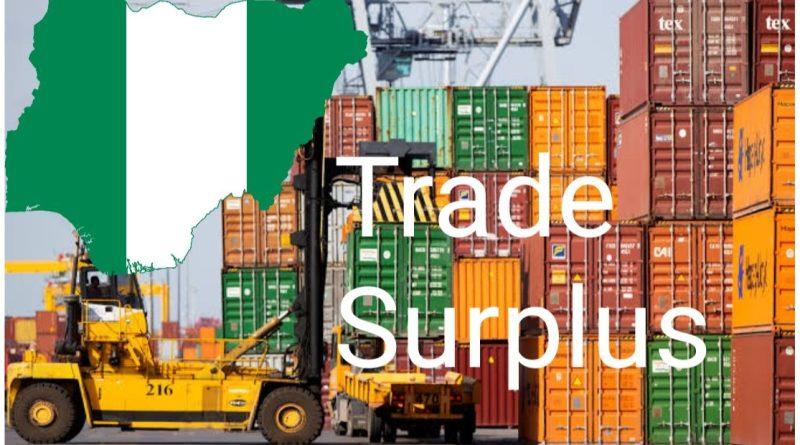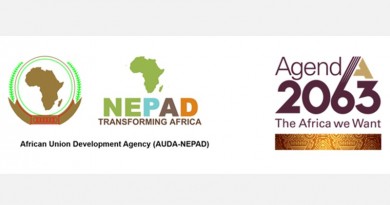How Nigeria achieved a N6.5 trillion Breakthrough Trade Surplus in Q1 of 2024
The most recent report from the National Bureau of Statistics (NBS) in its series on foreign trade in goods indicates that the total value of trade increased by +146% y/y to N31.8trn in Q1 ’24. On a q/q basis, it rose by +46%. The total export value increased by +51% q/q to N19.2trn compared with N12.6trn recorded in Q4 ‘23. The import value increased by +39.6% q/q to N12.6bn from N9.1trn in Q4 ‘23. The net result was a surplus of N6.5trn in Q1 ’24 vs N3.6trn in Q4 ’23. It is worth noting that the total trade as a percentage of nominal GDP stood at 54% in Q1 ’24, compared with 33% in Q4’ 23.
According to the NBS report, the top 5 import trading partners in Q1 ’24 were China with N2.9trn (23.2%), India N1.1trn (N8.5%), USA N1.0trn (8.0%), Belgium N955.9bn (7.6%) and Netherlands N591.5bn (4.7%). These countries collectively accounted for 52% of total imports in Q1 ‘24. Imports from ECOWAS stood at N113bn, representing 28% of total imports within Africa.
Manufacturing goods accounted for the largest share of imports, 45.4%, followed by other oil products 35.2%, raw material 11.6%, and agriculture 7.3% However, solid minerals registered a modest share of 0.5%, experiencing a notable growth in value of 59.2% y/y to N71.4bn in Q1 ’24.
Regarding export destinations, France was Nigeria’s top exporting partner in Q1 ’24, with exports valued at N2.1trn (11.1%). This was followed by Spain N2trn (10.6%), the Netherlands at N1.7trn (8.8%), India at N1.6trn (8.4%), and the United States at N1.3trn (6.8%). Collectively, these five countries accounted for 45.7% of Nigeria’s total exports in Q1 ’24.
In the first quarter of 2024, crude oil made up 81% of total exports, with its export value rising by 50% quarter-on-quarter to N15.4 trillion from N10.3 trillion in the fourth quarter of 2023. Average crude oil production, including condensates, was 1.54 million barrels per day in Q1 ’24, slightly higher than the 1.53 million barrels per day in Q4 ’23.
Non-oil exports saw a 54% year-on-year increase to N3.6 trillion, representing 19.2% of total exports. Top agricultural export commodities in Q1 ’24 included sesame seeds, high-quality cocoa beans, standard cocoa beans, soybeans (excluding seeds), soybean flours and meals, cashew nuts in shell, natural cocoa butter, flower buds, shelled cashew nuts, other cocoa beans, and soybean seeds.
Nigeria exported goods worth N1.2 trillion to ECOWAS in Q1 ’24, up from N686.7 billion in Q4 ’23, accounting for 56% of total exports within Africa. The Apapa Port was the most utilized port for exports, with goods worth N18.1 trillion exiting the country through this port, representing 94.3% of total exports. Other commonly used ports included Tin Can Island (N708.8 billion) and Port Harcourt (N270.9 billion).
GLOBAL FOCUS/REGIONAL TRADE
On a global scale, merchandise trade increased by 2.7% quarter-on-quarter to USD12.2 trillion in Q4 ’23, compared to USD11.8 trillion in Q3 ’23, according to data from the World Trade Organization (WTO). However, total merchandise trade for the full year of 2023 declined by 5.1%, partly due to trade tensions in certain regions and weak global demand. The recent disruptions in the Panama Canal and the Red Sea have also led to increased freight costs, further impacting merchandise trade activity.
At the end of May 2024, the price of wheat rose by 6.3% month-on-month to reach USD289.4/MT. Maize prices also increased by 3.2% month-on-month to close at USD197.8/MT. Meanwhile, Cocoa prices decreased by 0.3% month-on-month to close at USD9,254.4/MT. The prices of agricultural commodities are still high due to global supply disruptions and adverse weather conditions in some regions. According to the United Nations Conference on Trade and Development (UNCTAD), agricultural commodity prices are expected to remain stable or decrease in 2024.
In China, trade exports increased by 1.1% quarter-on-quarter to USD870.6bn in Q4 2023, compared to USD861.2bn in Q3 2023. It is important to note that China’s PMI increased to 51.7 in May 2024 from 51.4 in April 2024, indicating stable industrial output amid recovery in the property sector.
In Africa, total merchandise trade increased slightly by 0.2% quarter-on-quarter to USD324.1bn in Q4 2023, compared to USD323.4bn in Q3 2023. The region experienced a trade deficit of USD21.2bn in Q4 2023. Resource-rich economies like South Africa recorded a trade surplus in Q4 2023, while non-resource-rich economies like Kenya and Egypt recorded trade deficits. A recent report from UNCTAD revealed that Africa’s total external position is expected to worsen in 2024 due to declining commodity prices. Overall, the country’s external position is expected to remain vulnerable to external shocks. SOURCE: Coronation Economic Note by Coronation Merchant Bank




